
by Nancy Gilbert | May 4, 2017
A water reservoir can store rainwater for domestic use or for irrigating a vegetable garden. This manual describes how to make inexpensive cement storage tanks like straw or bamboo mat tank and
brick tanks. A small amount of cement is needed. The walls are reinforced with steel wire. The tank can be placed under a roof to collect rainwater or just beside a well with a pump to store irrigation water.
It is advisable to add a simple ground water recharge overflow pipe to store over capacity of water in the ground, ready to pump it up later.
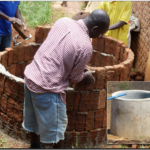 Get the manual at: http://jacana.help/resources/water#maketank
Get the manual at: http://jacana.help/resources/water#maketank
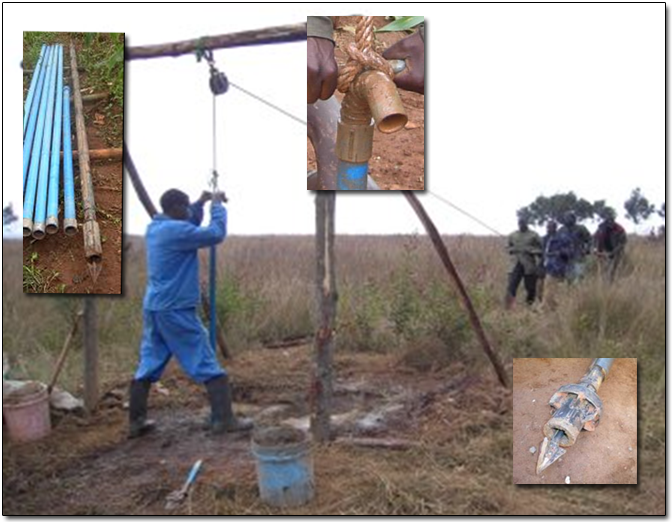
by Nancy Gilbert | May 4, 2017
Baptist drilling is one of the manual drilling techniques. It is named after the Baptist Missionary, Mr Terry Waller who invented the technique.
This method is limited to non cemented, sedimentary deposits of sand and clay and will not drill through solid bed rock. Some soft rock can be drilled slowly. For gravel or stones from 1 to 3 cm an open bit can be used combined with sludging. A mayor difference compared to other techniques as the Rota Sludge is that this technique uses 1 ¼” PVC pipes on top of the lower steel drill pipe. Therefore this option is very light and can drill down to 100 meters deep.
See also www.waterforallinternational.org. This technique uses a sharp drill bit to loosen the soil and drilling liquid to lift the particles.
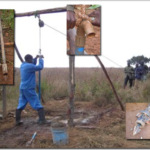 Get the manual at: http://jacana.help/resources/water#baptistdrilling
Get the manual at: http://jacana.help/resources/water#baptistdrilling

by Nancy Gilbert | May 4, 2017
People make hand dug wells since history. They dig until they find water. A hand dug well has normally a diameter of 0.8 up to 1.5 metre and varies in depth, depending on how deep water is found. When using a ventilator for fresh air during digging, it becomes even possible to dig up to 30 meter or more. A hand dug well can be made in hard soils as well as in soft soils. The soil structure and water level determines how to support the walls.
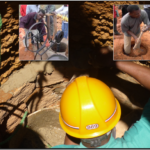 Get the manual at: http://jacana.help/resources/water#welldigging
Get the manual at: http://jacana.help/resources/water#welldigging
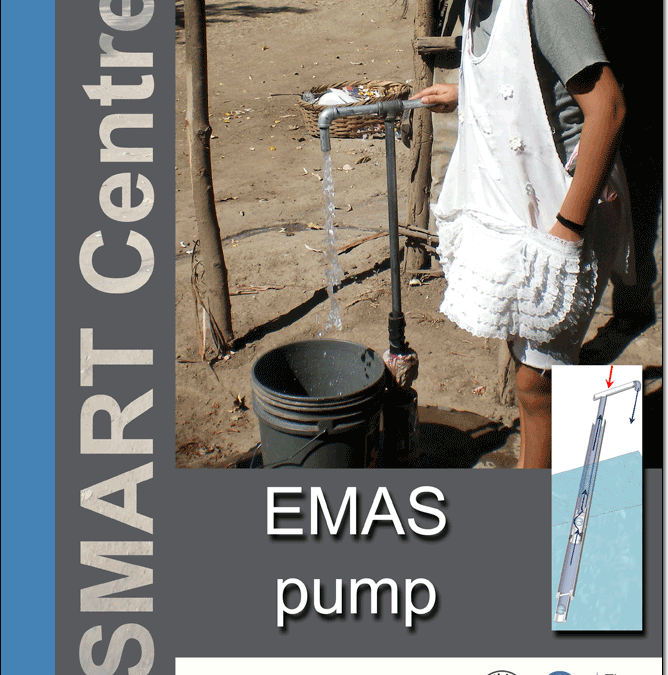
by Nancy Gilbert | May 4, 2017
The EMAS pump can be made from different sizes of PVC pipes and a marble. Compared to a rope pump, the EMAS pump produces water under pressure. So you can pump up water to a higher lever then where the pump is. EMAS pumps are also cheaper and easier to make. Yields are however in general less the a rope pump.
There is a ton of useful information and instruction videos at www.emas-international.de also about other low cost technologies. We advise to have a look.
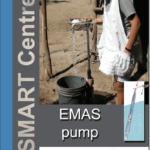 Get the manual at: http://jacana.help/resources/water#makeemaspump
Get the manual at: http://jacana.help/resources/water#makeemaspump

by Nancy Gilbert | May 4, 2017
Windlass-model rope pump is mounted on poles next to the borehole or hand dug well. The windlass-model is normally used as a family or farm pump and not as a community pump. The windlass-model is much cheaper than the A-model. The yield and diameter of the pump pipe depends on the depth of the well (but are the same as the A-model):
- 70 litre/minute with pump pipe 1¼” for water levels to 5 meters
- until 9 litre/minute with pump pipe ½” until water levels up to 35 meters and variations in between.
This manual gives you all the details how to produce these kind of models.
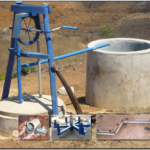 http://jacana.help/resources/water#ropepump3
http://jacana.help/resources/water#ropepump3
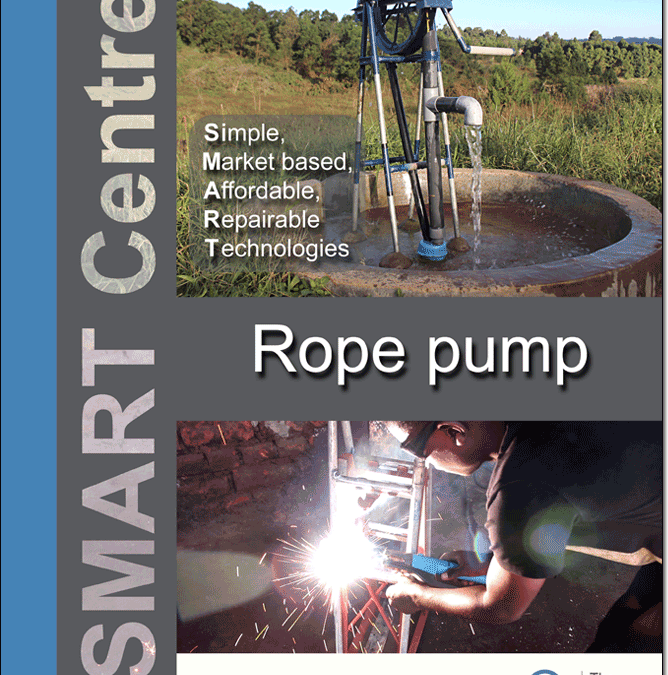
by Nancy Gilbert | May 4, 2017
A rope pump consists of a wheel and an endless rope with pistons made out of rubber from a car tire or High Density PE. The pistons are attached to the rope at intervals of a meter and fit with a clearance of 1 millimetre in the pump pipe (also called raising main). The rope and pistons are moved by a handle with a wheel and go down to the bottom of the well where they enter in the PVC pump pipe via a guidebox. Between the pistons water is now lifted to the surface and leaves via the horizontal outlet pipe which has a bigger diameter than the pump pipe. The wheel and handle are mounted on a structure on top of the well or borehole. Rope pumps can be used on hand dug wells of 3 meters or more to boreholes with diameter of 2 inches or more. The yield and diameter of the pump pipe depends on the depth of the well:
- 70 litre/minute with pump pipe 1¼” for water levels to 5 meters
- until 9 litre/minute with pump pipe ½” until water levels up to 35 meters and variations in between.
The name A model is because of the pump’s structure is in the shape of the letter ‘A’. This manual gives you details how to produce this model.
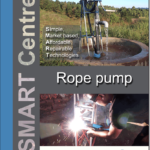 http://jacana.help/resources/water#ropepump1
http://jacana.help/resources/water#ropepump1

 Get the manual at: http://jacana.help/resources/water#maketank
Get the manual at: http://jacana.help/resources/water#maketank









